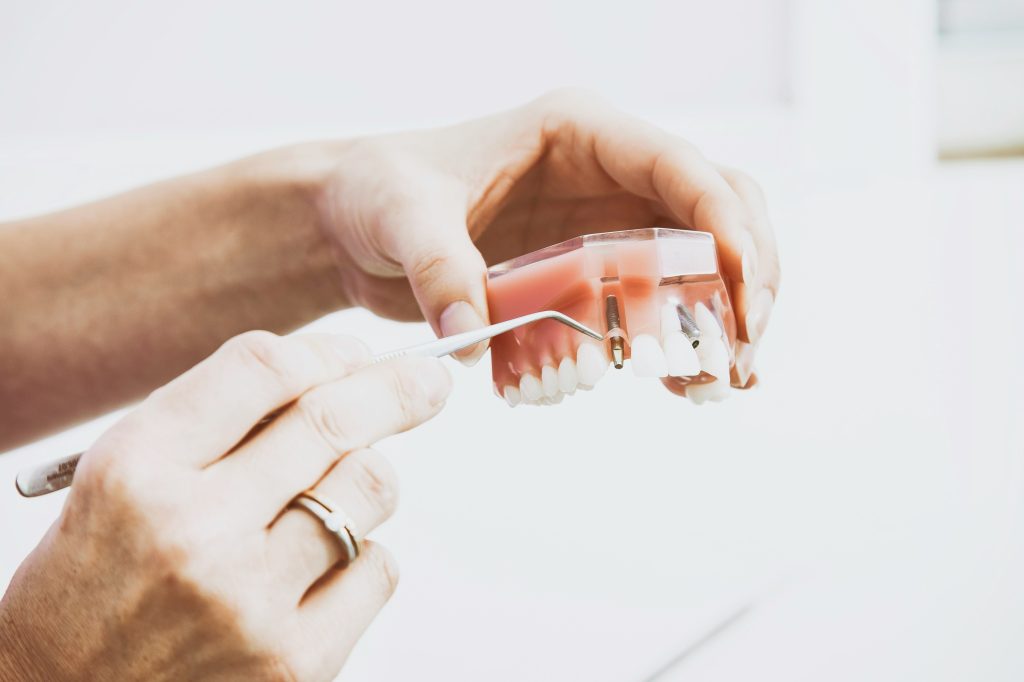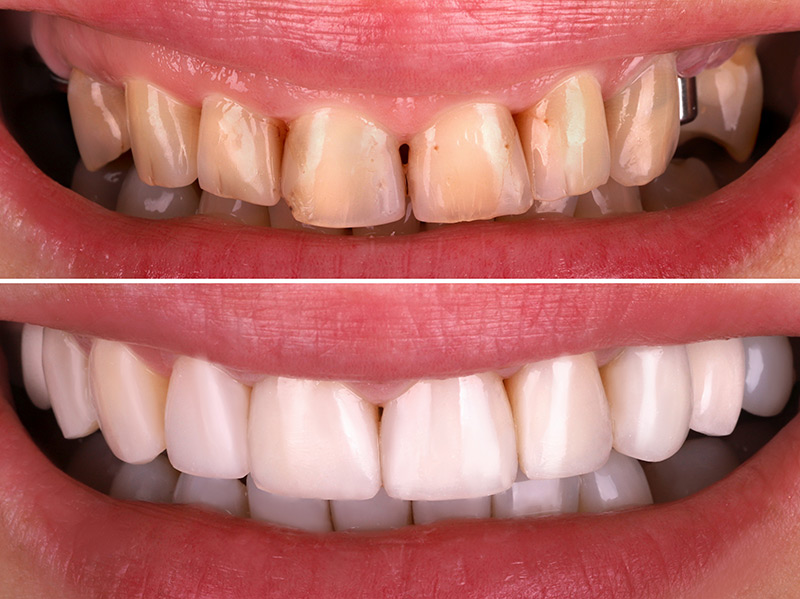Restorative dental care plays a crucial role in maintaining oral health. It involves procedures that repair or replace damaged or missing teeth.
From fillings and crowns to bridges and implants, restorative dentistry offers a range of solutions. These treatments not only restore the function of teeth but also improve their appearance.
But what can you expect when you opt for restorative dental care?
This article aims to guide you through the process. We’ll delve into the common procedures, the role of technology, and what happens during your visit.
We’ll also discuss aftercare, financing options, and the benefits of restorative dental care.
Whether you’re considering restorative dental care or simply curious, this guide will provide the information you need.

Understanding Restorative Dental Care
Restorative dental care is a branch of dentistry focused on restoring the function and aesthetics of your teeth. It involves diagnosing and treating diseases and issues affecting the teeth and gums.
The importance of restorative dental care cannot be overstated. It not only addresses immediate issues like tooth decay or loss but also prevents further complications.
Common restorative dental procedures include:
- Fillings: Used to treat cavities and minor tooth decay.
- Crowns: Caps that cover damaged teeth or after root canal treatment.
- Bridges: Replace missing teeth by bridging the gap with artificial teeth.
- Dental Implants: Provide a permanent solution for missing teeth.
- Dentures: Replace missing teeth and can be partial or full.
The benefits of restorative dental care extend beyond oral health. It can improve your chewing and speech, contributing to better nutrition and communication. Moreover, it can enhance your self-esteem by improving your smile. Restorative dental care is a key component of comprehensive oral health care, aiming to keep your teeth healthy and your smile bright.
The Initial Consultation: Preparing for Your Visit
Your journey towards restorative dental care begins with an initial consultation. This is a crucial step where your dentist assesses your oral health, discusses your concerns, and outlines potential treatment options.
During this visit, you can expect a thorough examination of your teeth and gums. Your dentist may also take X-rays or impressions to better understand your dental structure. This information is vital in creating a personalized treatment plan that addresses your specific needs.
It’s important to come prepared with questions to ask your dentist. You might want to know about the benefits and risks of proposed treatments, the estimated costs, and what to expect during recovery. Remember, the goal of this consultation is not just to diagnose, but also to educate you about your oral health and restorative care options.
Common Restorative Dental Procedures Explained
Restorative dental care encompasses a variety of procedures designed to repair or replace damaged or missing teeth. Each procedure serves a unique purpose and is chosen based on the patient’s specific needs. Let’s delve into some of the most common restorative dental procedures.
Fillings
Fillings are one of the most common restorative procedures. They are used to repair teeth that have been damaged by decay. The dentist removes the decayed portion of the tooth and fills the area with a restorative material, such as composite resin or amalgam.
Crowns
A dental crown is a tooth-shaped cap that is placed over a damaged tooth. It is used to restore the tooth’s shape, size, strength, and appearance. Crowns are often used when a tooth is severely damaged or decayed and cannot be repaired with a filling.
Bridges
Bridges are used to replace one or more missing teeth. They consist of two or more crowns for the teeth on either side of the gap and a false tooth or teeth in between. Bridges are anchored to the natural teeth or implants surrounding the empty space.
Dental Implants
Dental implants are a more permanent solution for missing teeth. They involve the placement of a titanium post into the jawbone, which acts as a root for the replacement tooth. Once the implant has integrated with the bone, a crown is attached to provide a natural-looking replacement.
Dentures
Dentures are removable appliances that can replace missing teeth and surrounding tissues. They come in two types: complete dentures for when all teeth are missing, and partial dentures when some natural teeth remain. Dentures help restore the function and appearance of a full set of teeth.
Additional Procedures
In addition to these common procedures, restorative dentistry may also involve more complex treatments. These include root canal therapy, periodontal treatments, and orthodontic interventions. The choice of procedure depends on the extent of the dental issue and the overall oral health of the patient.
The Role of Technology in Restorative Dentistry
Technology plays a significant role in modern restorative dentistry, enhancing precision and patient comfort. Digital impressions and Computer-Aided Design/Computer-Aided Manufacturing (CAD/CAM) technology have revolutionized the way restorations are designed and created.
3D printing is another groundbreaking technology in restorative dentistry. It allows for the creation of custom restorations, such as crowns and bridges, with remarkable accuracy. This technology not only improves the fit and function of restorations but also significantly reduces the time required for their fabrication.
What to Expect During the Procedure
During a restorative dental procedure, your comfort is a top priority. To ensure this, your dentist will discuss anesthesia and sedation options with you. Local anesthesia is commonly used to numb the area being treated, effectively blocking pain.
For more complex procedures or for patients with dental anxiety, sedation options may be available. These can range from mild sedatives to help you relax, to general anesthesia for more extensive treatments. Your dentist will explain these options and help you choose the best one for your needs.
Understanding the steps involved in common restorative procedures can also help alleviate any anxiety. For instance, a dental filling procedure typically involves removing the decayed tooth material, cleaning the affected area, and then filling the cleaned-out cavity with a filling material.
Similarly, the process for a dental crown involves reshaping the tooth to fit the crown, taking an impression of the tooth, and finally cementing the custom-made crown onto the reshaped tooth. Your dentist will walk you through each step of your specific procedure, ensuring you know what to expect.
Aftercare: Ensuring the Longevity of Your Restorative Work
After your restorative dental procedure, proper aftercare is crucial to ensure the longevity of your restoration. Your dentist will provide you with specific post-procedure care tips. These may include advice on eating and drinking, oral hygiene practices, and managing any discomfort or swelling.
Regular dental check-ups are also an essential part of aftercare. These visits allow your dentist to monitor the condition of your restoration and your overall oral health. They can identify any potential issues early, before they become more serious problems.
Remember, restorative dental work is an investment in your oral health and overall well-being. By following your dentist’s aftercare instructions and maintaining regular dental visits, you can ensure your restoration lasts as long as possible and continues to function effectively.
Financing and Insurance: Understanding Your Options
Restorative dental care is often covered, at least in part, by dental insurance. However, the extent of coverage can vary greatly depending on your specific insurance plan. It’s important to understand what your insurance covers before beginning treatment. Your dental office can often assist in this process, helping you navigate your insurance benefits.
For costs not covered by insurance, many dental offices offer payment plans or financing options. These can make restorative dental care more affordable by spreading the cost over a period of time. Always discuss these options with your dental office to find a solution that fits your budget.
The Psychological and Overall Health Benefits of Restorative Dental Care
Restorative dental care can significantly improve your self-esteem and quality of life. A healthy, functional smile can boost your confidence, making social and professional interactions more enjoyable. Moreover, being able to eat and speak without discomfort or difficulty can greatly enhance your daily life.
Beyond the psychological benefits, restorative dental care also contributes to your overall health. By treating decayed or damaged teeth, restorative dentistry can prevent further oral health issues. Additionally, a healthy mouth can reduce the risk of systemic diseases linked to oral health, such as heart disease and diabetes.
Choosing the Right Restorative Dentist
Choosing the right restorative dentist is crucial for successful treatment. You should look for a dentist with the necessary qualifications and extensive experience in restorative dentistry. This ensures that they have the skills and knowledge to provide high-quality care.
Patient testimonials and case studies can also be helpful in making your decision. They can give you an idea of the dentist’s work and the results you can expect. Remember, a good restorative dentist will prioritize your comfort and satisfaction, and work with you to achieve the best possible outcome.
Conclusion: The Future of Restorative Dental Care
The field of restorative dentistry continues to evolve, with advances in techniques and materials promising better outcomes for patients. From the potential of regenerative techniques to the use of biocompatible materials, the future of restorative dental care is bright. These advancements aim to improve the effectiveness of treatments, enhance patient comfort, and ensure long-lasting results.
However, the success of restorative dental care doesn’t end with the procedure. Ongoing care and education are crucial. Regular dental check-ups, good oral hygiene, and patient education about their treatment play a significant role in the longevity of restorative work. As patients, we must take an active role in our dental health to reap the full benefits of restorative dental care.
